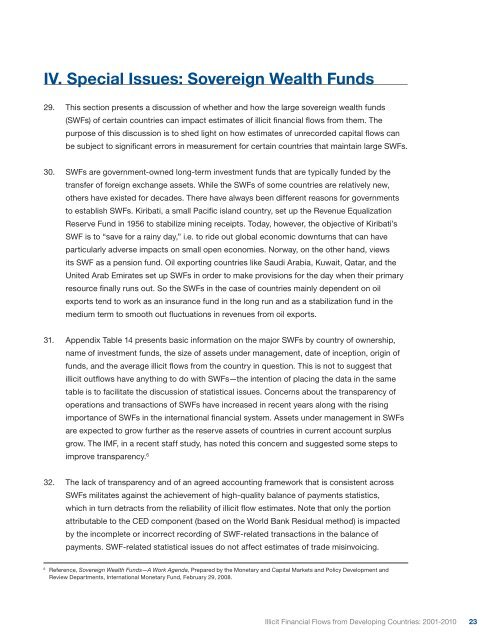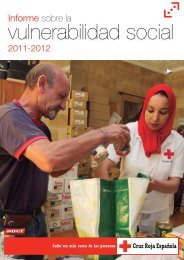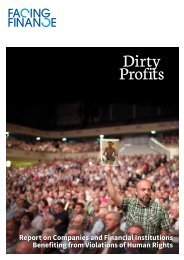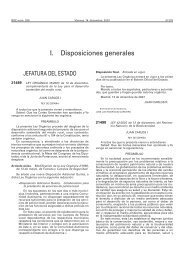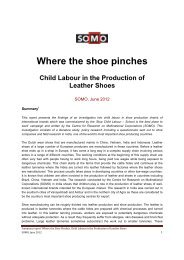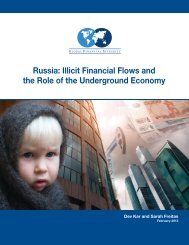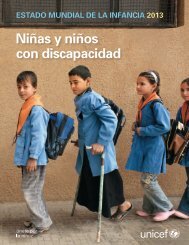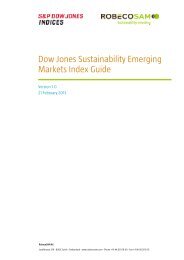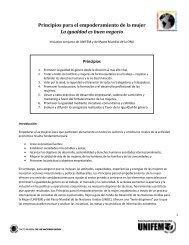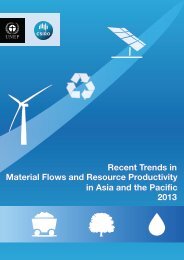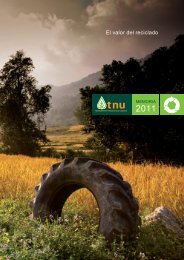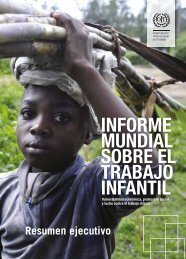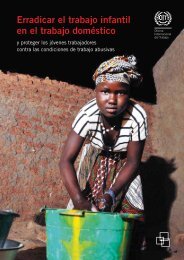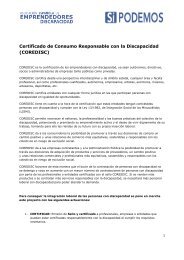Illicit Financial Flows from Developing Countries ... - culturaRSC.com
Illicit Financial Flows from Developing Countries ... - culturaRSC.com
Illicit Financial Flows from Developing Countries ... - culturaRSC.com
- No tags were found...
You also want an ePaper? Increase the reach of your titles
YUMPU automatically turns print PDFs into web optimized ePapers that Google loves.
IV. Special Issues: Sovereign Wealth Funds29. This section presents a discussion of whether and how the large sovereign wealth funds(SWFs) of certain countries can impact estimates of illicit financial flows <strong>from</strong> them. Thepurpose of this discussion is to shed light on how estimates of unrecorded capital flows canbe subject to significant errors in measurement for certain countries that maintain large SWFs.30. SWFs are government-owned long-term investment funds that are typically funded by thetransfer of foreign exchange assets. While the SWFs of some countries are relatively new,others have existed for decades. There have always been different reasons for governmentsto establish SWFs. Kiribati, a small Pacific island country, set up the Revenue EqualizationReserve Fund in 1956 to stabilize mining receipts. Today, however, the objective of Kiribati’sSWF is to “save for a rainy day,” i.e. to ride out global economic downturns that can haveparticularly adverse impacts on small open economies. Norway, on the other hand, viewsits SWF as a pension fund. Oil exporting countries like Saudi Arabia, Kuwait, Qatar, and theUnited Arab Emirates set up SWFs in order to make provisions for the day when their primaryresource finally runs out. So the SWFs in the case of countries mainly dependent on oilexports tend to work as an insurance fund in the long run and as a stabilization fund in themedium term to smooth out fluctuations in revenues <strong>from</strong> oil exports.31. Appendix Table 14 presents basic information on the major SWFs by country of ownership,name of investment funds, the size of assets under management, date of inception, origin offunds, and the average illicit flows <strong>from</strong> the country in question. This is not to suggest thatillicit outflows have anything to do with SWFs—the intention of placing the data in the sametable is to facilitate the discussion of statistical issues. Concerns about the transparency ofoperations and transactions of SWFs have increased in recent years along with the risingimportance of SWFs in the international financial system. Assets under management in SWFsare expected to grow further as the reserve assets of countries in current account surplusgrow. The IMF, in a recent staff study, has noted this concern and suggested some steps toimprove transparency. 632. The lack of transparency and of an agreed accounting framework that is consistent acrossSWFs militates against the achievement of high-quality balance of payments statistics,which in turn detracts <strong>from</strong> the reliability of illicit flow estimates. Note that only the portionattributable to the CED <strong>com</strong>ponent (based on the World Bank Residual method) is impactedby the in<strong>com</strong>plete or incorrect recording of SWF-related transactions in the balance ofpayments. SWF-related statistical issues do not affect estimates of trade misinvoicing.6Reference, Sovereign Wealth Funds—A Work Agenda, Prepared by the Monetary and Capital Markets and Policy Development andReview Departments, International Monetary Fund, February 29, 2008.<strong>Illicit</strong> <strong>Financial</strong> <strong>Flows</strong> <strong>from</strong> <strong>Developing</strong> <strong>Countries</strong>: 2001-201023


